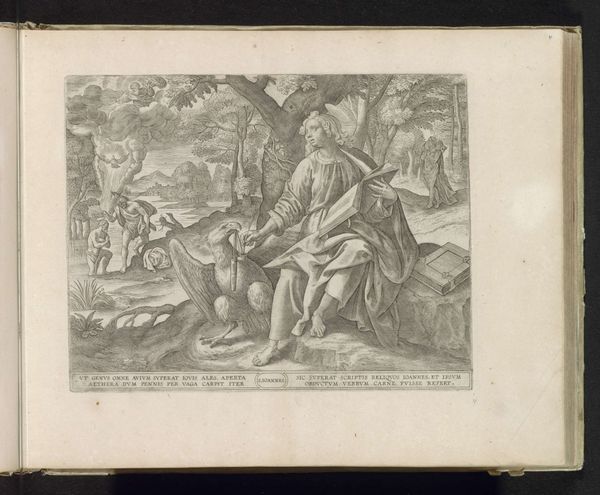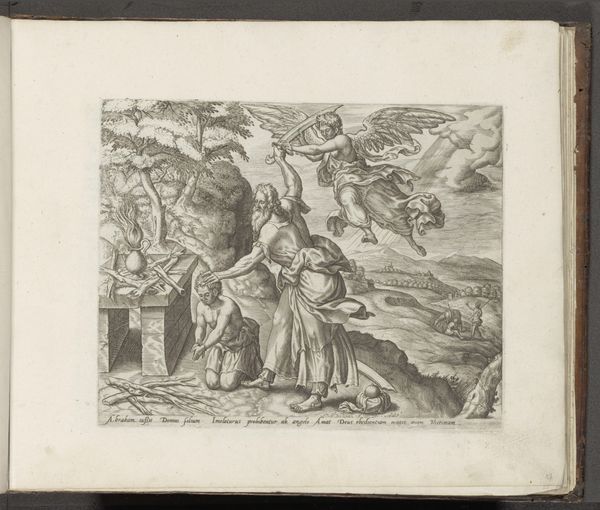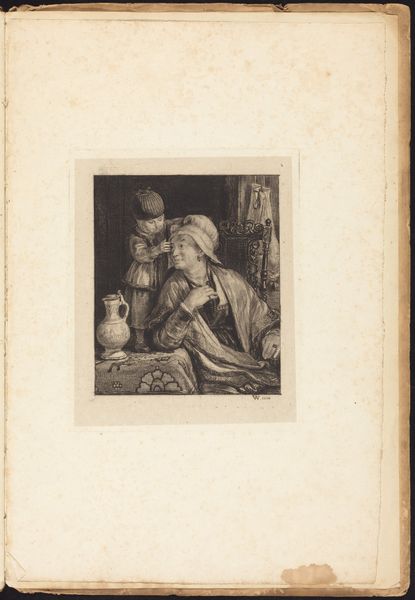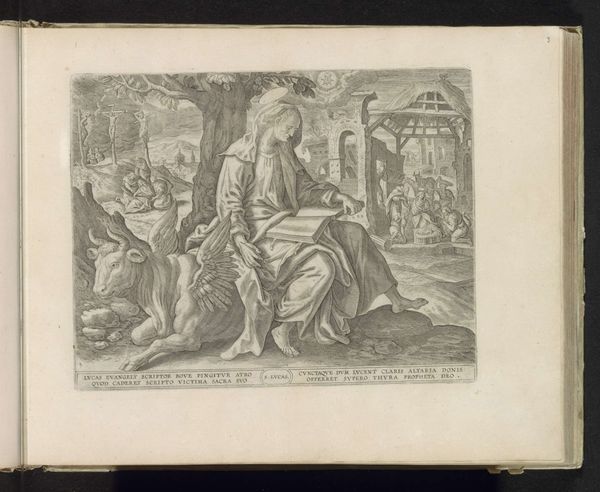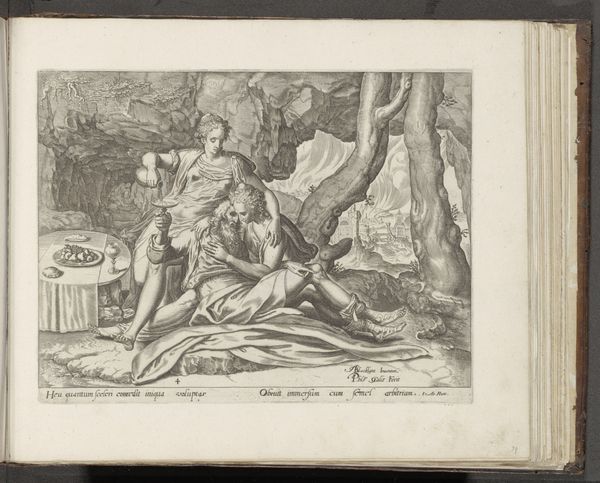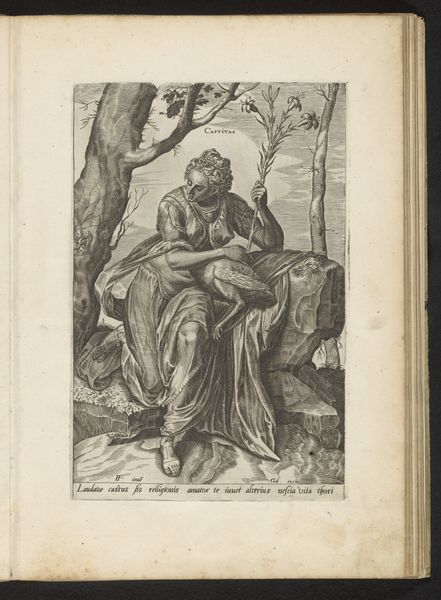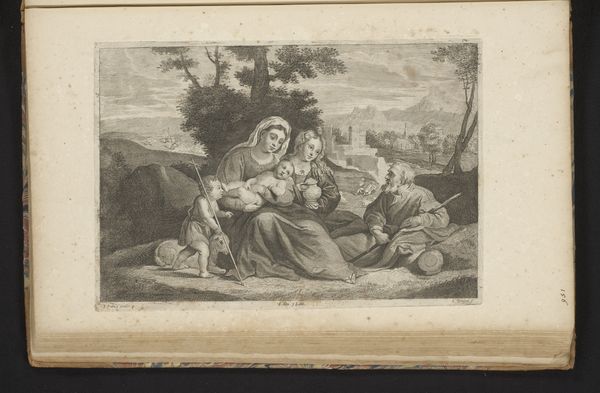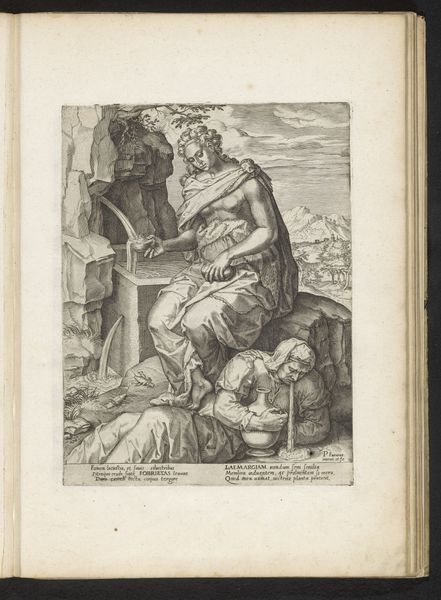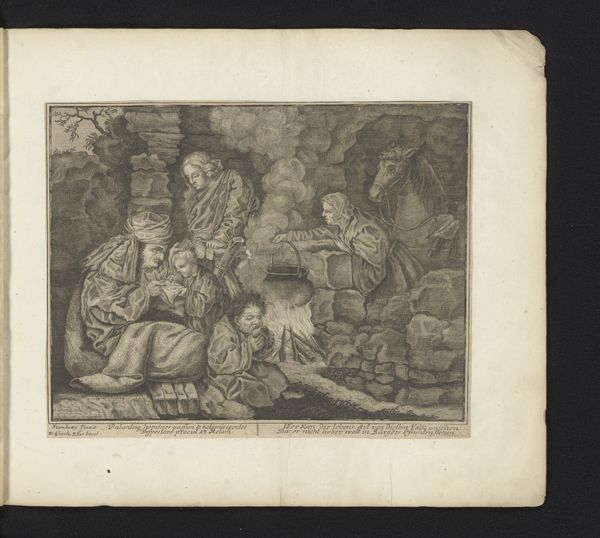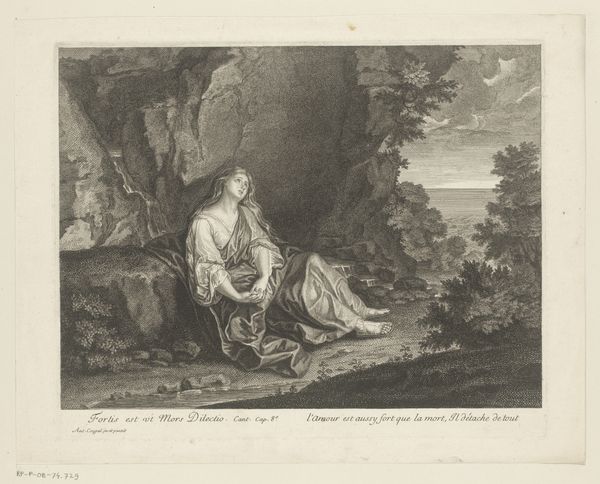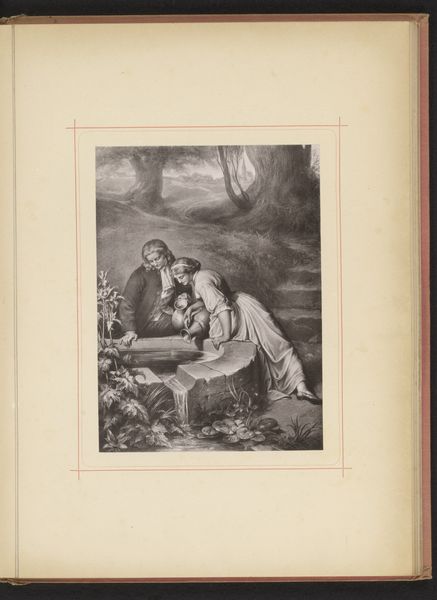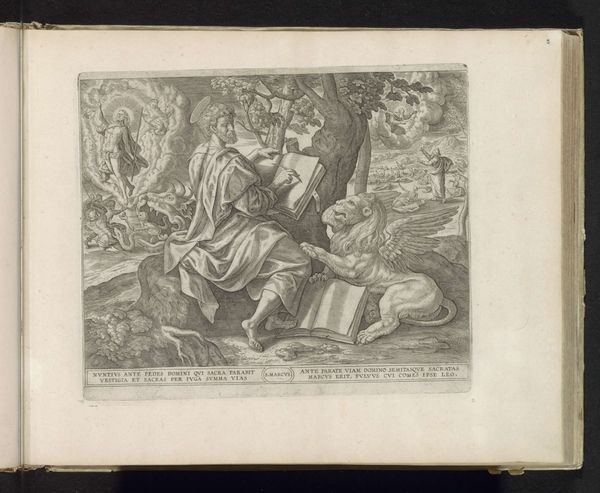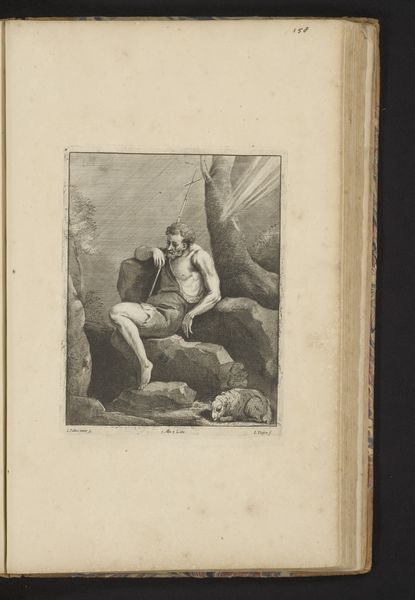
print, engraving
# print
#
landscape
#
figuration
#
11_renaissance
#
charcoal art
#
coloured pencil
#
history-painting
#
engraving
Dimensions: height 202 mm, width 229 mm
Copyright: Rijks Museum: Open Domain
Curator: What a beautifully somber engraving. Here we see "Boetvaardige Petrus" – or "Repentant Peter" – crafted in the 16th century by Philips Galle. The artwork employs the print medium. It certainly presents a fascinating juxtaposition of landscape and figuration. Editor: It really does strike a melancholic chord. The isolation of the figure, the darkening cave…it's a study in remorse, almost oppressive in its quiet intensity. Curator: The artist clearly considered the societal function of the print; how it was made and its intended use as a pedagogical or devotional aid. I am drawn to consider the labor and materials involved in its creation; this artwork isn't just about Peter, it’s about the physical act of engraving. Editor: Precisely. And the emotional impact hinges on established visual codes. Consider the key prominently displayed - surely alluding to Peter’s symbolic role and the power to unlock spiritual understanding? Even the placement of the figure within a cave...a visual signifier of seclusion, contemplation, or perhaps even spiritual rebirth. Curator: Yes, it emphasizes his internal reckoning with his denial of Christ, while Galle, the printmaker, wields their tools, collaborating with skilled workshops to disseminate visual narratives to diverse audiences. Did they anticipate the profound emotional impact it continues to have centuries later? Editor: Indeed. Notice the contrasting elements. The looming darkness of the cave offsets a vibrant city depicted in the background; and then there is the city on the plain as the symbol of hope and of return, emphasizing both temporal power, yet, the artist places Repentant Peter, not in the city, but rather as lost in some imagined cave to seek inwardness through self reflection. This piece continues to be so potent because those cultural symbols resonate powerfully even now. Curator: By understanding its means of production, labor practices, and the context surrounding its dissemination, one can unlock its multilayered social meaning. Editor: The enduring power of visual language and its emotional capacity never ceases to fascinate me. Curator: Agreed. Looking closely at Philips Galle’s production and distribution of prints, he becomes an entrepreneur of his day, in the distribution of religious instruction, thereby challenging preconceived notions on material art and devotional artifacts. Editor: Well said. A powerful piece that speaks volumes, both visually and culturally.
Comments
No comments
Be the first to comment and join the conversation on the ultimate creative platform.
